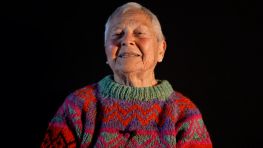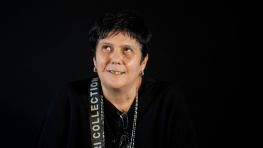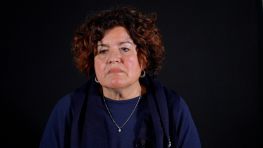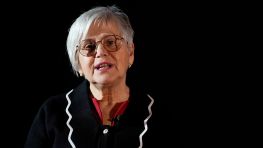 A life for others
A life for others Sergio Capocefalo
ACI 116 – The hospital flies to you
Sergio was born in a small village in Venezuela on June 18, 1956 to Italian parents. At the age of 17, he lost his father in a flood. The body was found by him with firefighters three days after the incident, 14 km away from the crash site. This event marks his entire subsequent life path, which he called the bloody transformation of his life.
He moved to Italy with his brother thanks to the presence of maternal relatives in Piedmont.
In 1975 an important change took place: he enrolled in the Nursing School of Maria Vittoria. In 1976 he enrolled in the faculty of philosophy, because he believes that the same is a catino of knowledge that is worth exploring and to put his life in order.
After graduating as a nurse, she began her professional activity in the emergency room of the Martini Hospital and, at the same time, dedicated herself to the development of the emergency in Piedmont. He undertakes numerous experiences in the field of emergency-urgency and reasons together with other professionals at the birth of a path for the basics of 118, proposing the government of situations of maxi emergency.
The heli-rescue was born and through the use of the radio bridges of the ACI is placed on the helicopter the inscription "ACI 116 – The hospital flies from you", a phrase conceived by him, representing the pride of a nurse who firmly believes in the mandate of the nursing profession.
The management of the emergency regarding the Caluso railway disaster sets the beginning, for the Piedmont region, of the awareness regarding maxi-emergency and of the fact that the ideas of nursing professionals must not be repressed but expressed to produce progress and change.
He participates in the birth of Operations Center 118, the first experience as a operations center in Italy, in which Sergio manages to play an important role in planning, organization and management. The advent of the Operations Center will lead to the experimentation of the medical car and the activation of advanced means of rescue with doctor and nurse on board.
The progress in the field of emergency allows Sergio the total nursing management before the plane crash in Caselle and then the flood of 2000 in the canavese. He defines his path as a building of life for sharing not only experiences and successes, but also mud, blood, despair.
Sergio states that the nursing profession is rich in dynamics and human relationships; it is necessary to interact with the other professions with a view to mutual exchange and continuous growth. It is also important to document what is taking place and what is, for the meaning that this entails, that is, to possess memory of oneself and the profession.
After several years dedicated to the emergency, he decides to face a further experience, dedicating himself to the freelance profession with an associated study.
He currently works in some operating blocks in Turin pending his well-deserved pension.
Video table of contents
- My roots: Italian blood and Venezuelan feeling
- The transformation of pain into opportunities: the nursing school and the faculty of philosophy
- The start of the emergency-emergency route and project 118: birth of the operations center and the heli-rescue
- The derailment of the train in Caluso: first experimentation of protocols for maxi-emergencies
- The significance in the context of the emergency of the first experiences of coordination and the evolution of the nursing profession
- The development of operations centre 118: organisation, training and responsibility
- The flood in the canavese: the coordination of maxi-emergency, responsibility and empathy
- What I brought to my profession: the richness of the relationship with the other
- What I would change in my life experience and training
- My advice to young people: a reflection between diversity and equality
- The development of the 118 operations centre and the evolution of the professional nursing role
- The plane crash in Caselle: the consolidation of maxi-emergency management
- A disappointment: the wrong people in the wrong place
- From self-medical to ambulances and a thought about training
- I turned the page with the liberal profession. Arrival in the operating room, waiting for retirement
Interview information
Country: IT
Region: Piemonte
City: Torino
Sergio Capocefalo
Date of birth: 06-18-1956
City: Barquisimeto
School: High school or Secondary
Profession: Nurse
Languages: italiano
Document by: Roberta Cabiddu, Angela Conte, Arianna Dattoli, Paola Donadio, Elisabetta Laveglia, Massimo Galvagno
Video by: Roberta Cabiddu, Angela Conte, Arianna Dattoli, Paola Donadio, Massimo Galvagno, Silvano Gregorino, Elisabetta Laveglia, Giacomo Patrizio
Created: 25-10-2019
Questo video fa parte del seguente archivio
Knowledge of healing
Knowledge of healing
The archive “knowledge of Healing” was created with the aim of giving space to the narration of the places of healing from a particular point of view: that of the patients and the medical staff. A point of view which differs from the statistical one that official relations use to describe the medical field. This is how we find new stories about how throughout time the relationship between patients and medical staff has changed, how knowledge has helped to bring change by offering the chance to critically revisit the training methods nowadays used.






